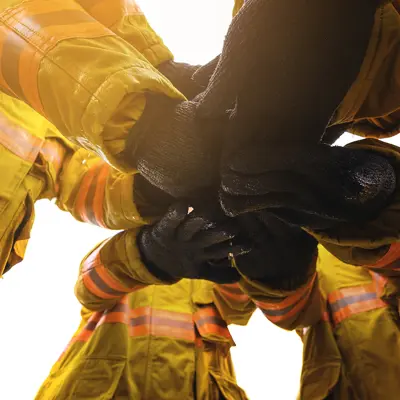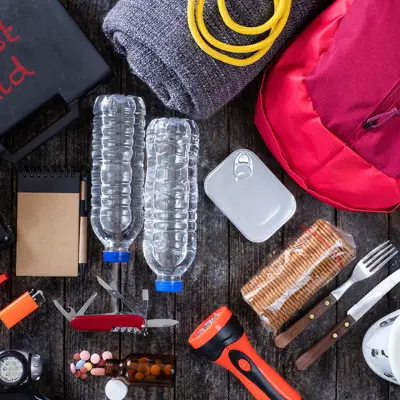Livestock Emergency Preparedness
The Livestock Emergency Preparedness Plan was created in 2019, as a response to the multitude of fires across northern Alberta that resulted in great economic, emotional, and physical loss to residents, business owners, and producers in the region.
By having a plan in place, municipal staff and livestock owners will be able to effectively work together to execute a safe course of action during an emergency, such as wildfires, floods, automobile accidents, and disease outbreaks.
The plan forms part of the Central Peace Regional Emergency Management (CPREM) Plan and is reviewed on an ongoing basis. CPREM consists of five municipalities; Birch Hills County, MD of Spirit River, Town of Spirit River, Saddle Hills County, and the Village of Rycroft.
Creating an Agricultural Producer Wildfire Plan is another essential step in preparing for a major wildfire event. A Wildfire Plan focuses on actions producers can take before, during, and after a wildfire to protect their operations and businesses. Saddle Hills County's Agricultural Services Department has put together an Agricultural Producer Wildfire Plan Workbook and accompanying Guide to help our producers feel better prepared in the event of an emergency.
See our list of Livestock Emergency Resources for feed, hauling, or equipment handling in the event of an emergency.
In the event of an emergency, if you have personal trailers, space, or any other equipment that you would like to offer to the effort then please get in touch with our Ag Services Department, at (780) 864-3760 or email ag@saddlehills.ab.ca
Our Agricultural Services Department has also put together a Shelter-in-Place Checklist for producers with tips for planning and what to do in the event of an emergency. Copies are available to download or view online (see below) or physical copies can be picked up at the County Administration Building during regular business hours.
Download a copy of the Emergency Preparedness Plan Download a copy of the Shelter-in-Place Checklist
Plan to Shelter in Place
In case of an emergency it is recommended to shelter your animals in place, if possible.
It is great management practice and highly recommended to survey your property for the best locations in case of disasters, such as fire or flood. Ensuring an adequate source of food and clean water for each of these locations is also essential.
If your pasture has large open space, evenly spaced native tree species, and no overhead powerlines, your livestock will most likely be better off to shelter in place in the event of an emergency vs. being evacuated.
Ensure you have enough food and water for yourself and your livestock for at least 72 hours (3 days). 
Get Prepared
In the event you or your animals must leave the property, please consider implementing and enacting the following:
- Visible identification and proof of ownership for all your animals
- Turn off all power to buildings and homes (emergency dependent)
- Secure all large objects that could become blowing debris, such as trailers, tanks, and troughs
- Label hazardous materials and put them in a safe place. Provide local fire, rescue, and emergency management authorities with information about the location of any hazardous materials on your property
- Store chemicals in an area that will not result in runoff or seepage should they be punctured or spilled
- Identify and remove all potential fire hazards

Make an Emergency Plan
Creating an Emergency Plan of your own with important contacts, such as neighbours, employees, veterinarians, poison control, transportation resources, and animal care, can go a long way in the event of an unplanned emergency.
Keeping this list on you at all times, in your cellphone or by other means, could assist you if you are away from your property during an event.
Choose an out of town contact person who is unlikely to be affected by the same emergency, and ensure they have a copy of this plan and all pertinent information should you need assistance.
Prepare a Farm Emergency Kit
Make an emergency kit to ensure that you have all of your emergency supplies in one, easy to access location, and let everyone know where it is in the event of an emergency. Ensure you check and update the contents regularly so that there are no surprises when you need to use it most.
Include the following items and personalize additional items according to your needs:
- A current list of all animals, including their location, and feeding, vaccination, and test records. Make this information available at various locations on the farm.
- Supplies for temporary identification of your animals, such as plastic neckbands and permanent markers, to label animals with your name, address, and contact number.
- A basic first aid kit.
- Handling equipment, such as halters, cages, blankets, and appropriate tools for each kind of animal.
- Bolt-cutters, to quickly free animals in an emergency.
- Water, feed, buckets, and all the tools and supplies needed for sanitation.
- Emergency equipment, such as cellphones, flashlights, portable radios (with weather radio band) and/or a weather radio, and batteries. Knowing the weather radio broadcast frequencies or weather information contact numbers, or keeping a note of them with the equipment, is good practice.
- Other safety and emergency items for your vehicles and trailers.

More Information:
Contact Us
Saddle Hills
Junction of Hwy 49 & Secondary Hwy 725
RR1, Spirit River AB
T0H 3G0
T. 780-864-3760
Fax 780-864-3904
Toll-free 1-888-864-3760
frontdesk@saddlehills.ab.ca
Sign up to our Newsletter
Stay up to date on the Saddle Hills activities, events, programs and operations by subscribing to our eNewsletters.






